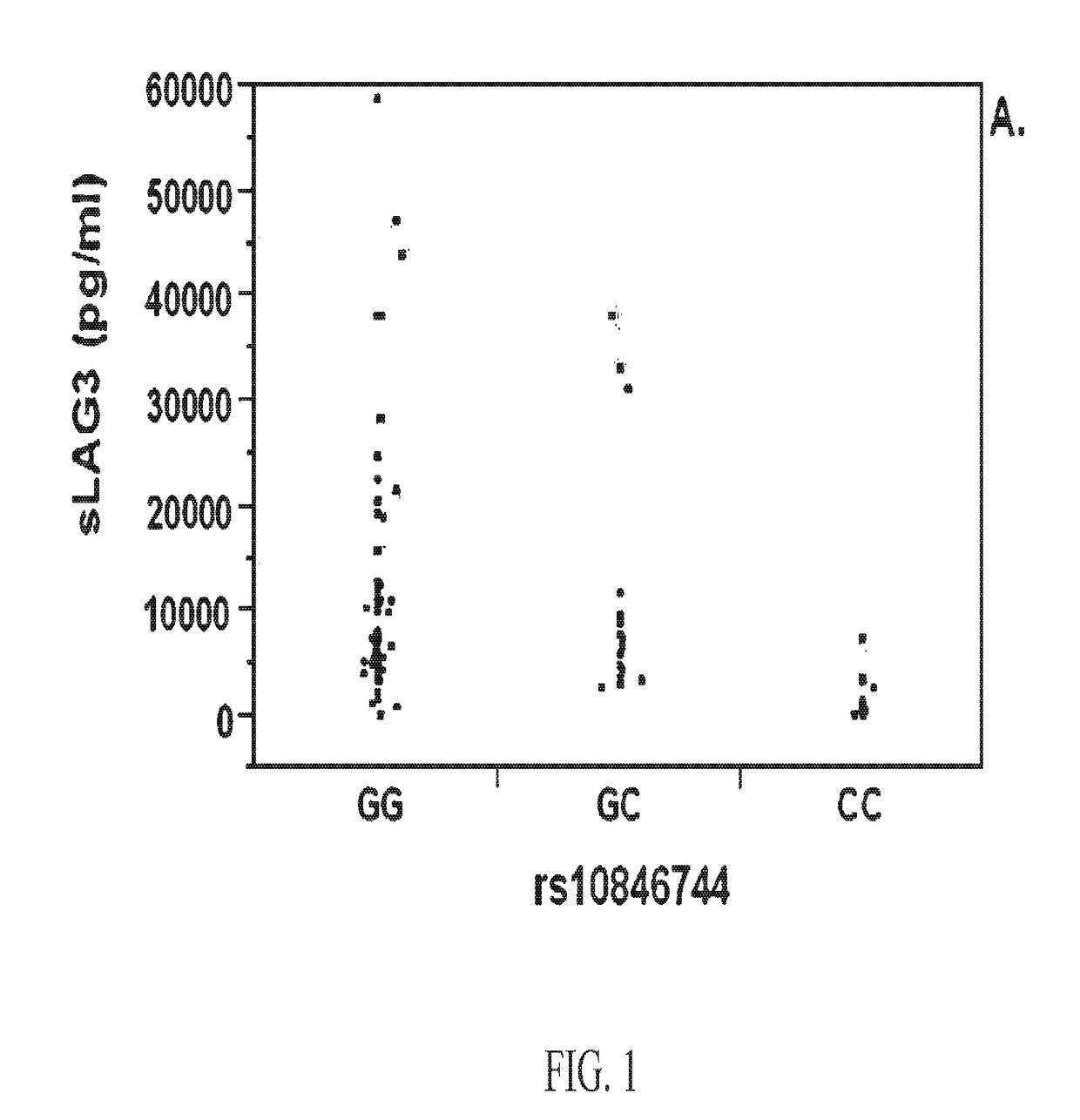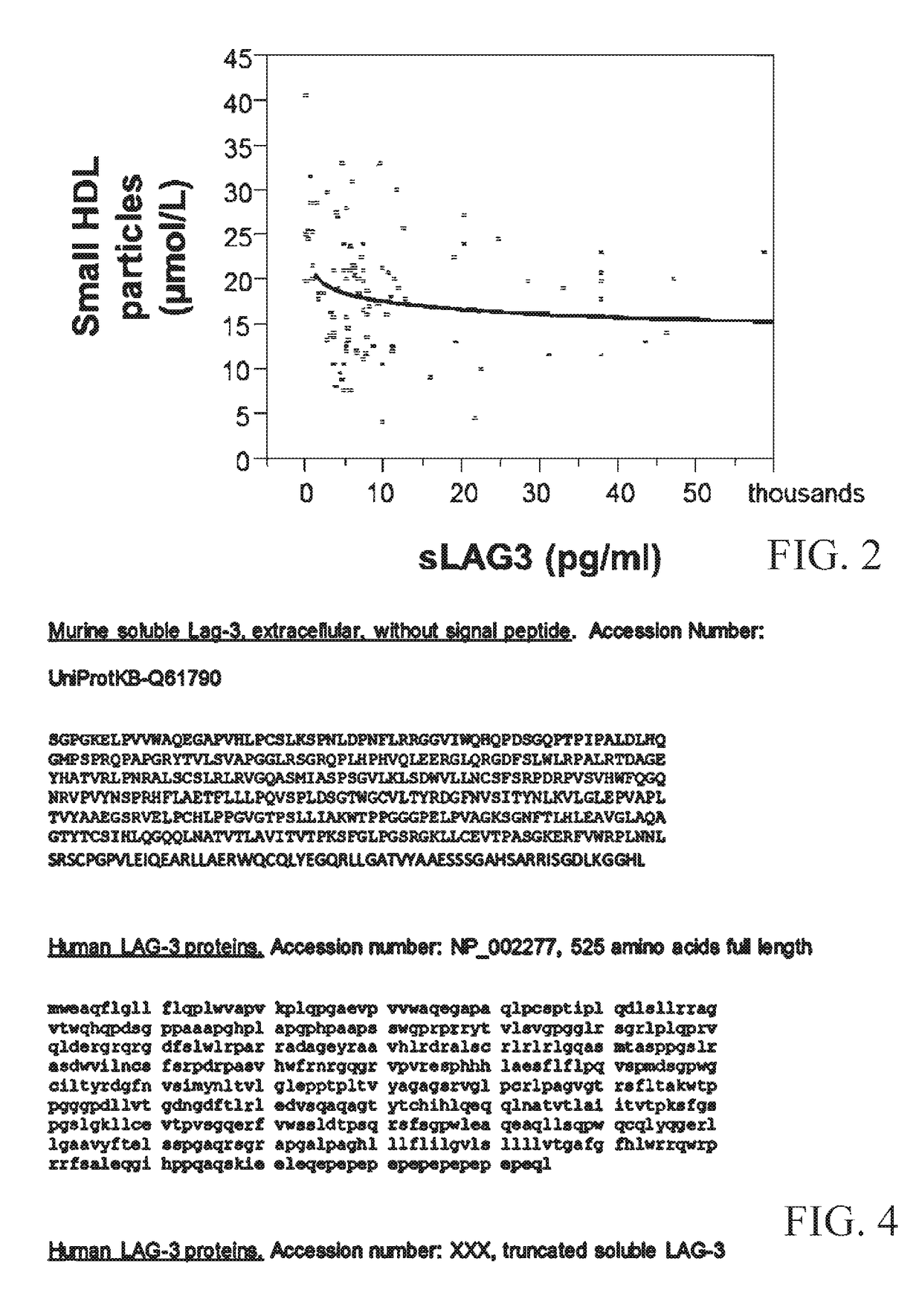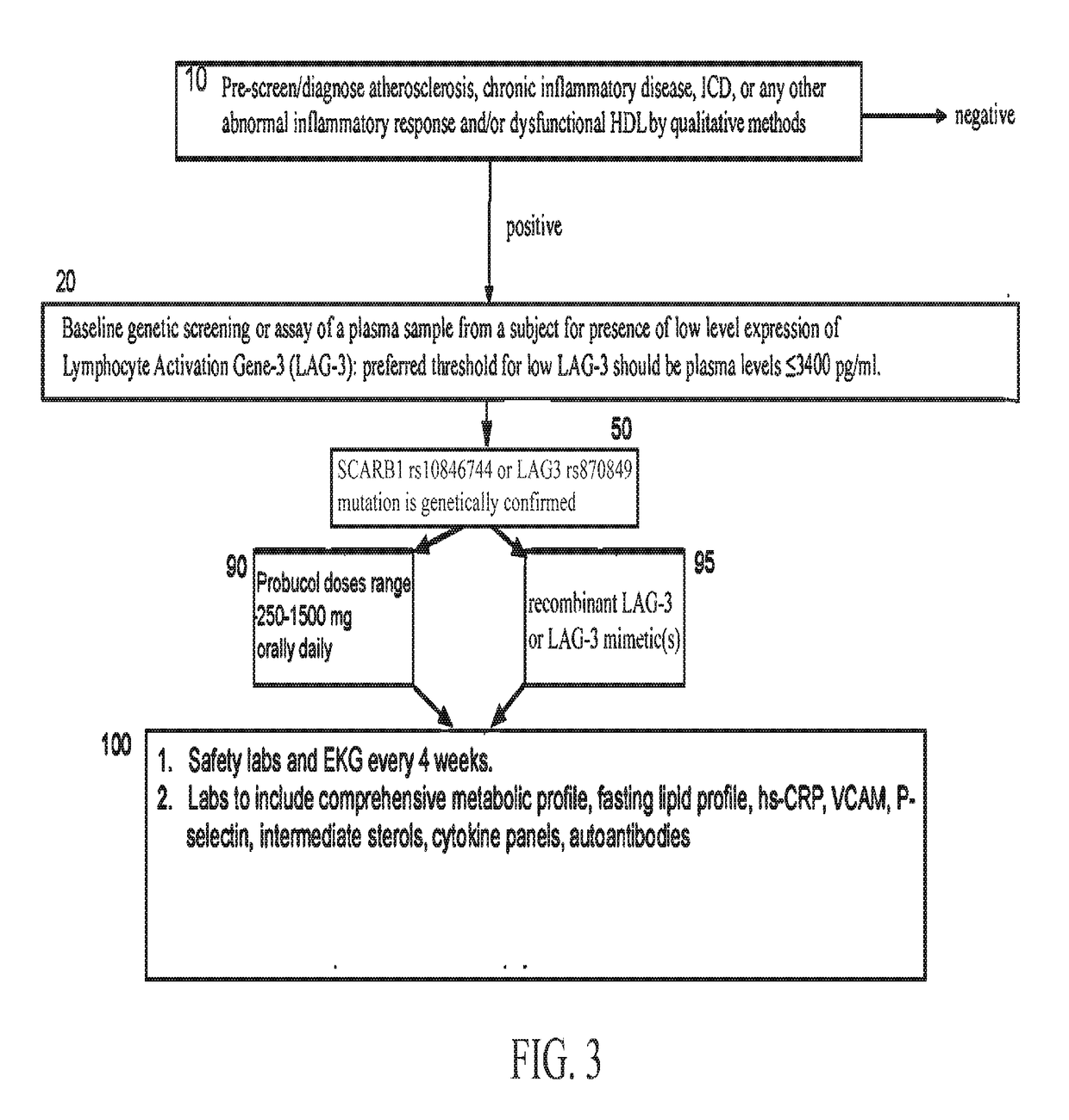Use of recombinant lymphocyte activation gene-3 as a companion therapeutic for patients at risk for cardiovascular disease and other chronic inflammatory diseases
a technology of recombinant lymphocyte activation and companion therapy, which is applied in the field of disease detection and treatment, can solve the problems of meliorating the consequent risk
- Summary
- Abstract
- Description
- Claims
- Application Information
AI Technical Summary
Benefits of technology
Problems solved by technology
Method used
Image
Examples
example 1
[0114]For all the atherosclerosis studies, we used 15 mice per group (30 per study) calculated from power calculations based on an expected 25% coefficient of variation of lesion area measurements, and 80% chance of detecting a 25% difference in lesion area. In all experiments, mice were fed a defined high cholesterol / high saturated fat diet for 10 weeks. Plasma lipid profiles were measured (LDL-C, HDL-C, triglycerides) both by standard colorometric assays, and by cholesterol determination in HPLC fractions. The amount of atherosclerotic lesion in the aortic roots and in the descending aorta were analyzed by established methods, including lesion volume assessed by lesion area of serial aortic root cross sections, and lesion area in en face Oil Red O-stained preparations of the aorta. Necrotic core size was measured as the area within lesions not stained by H&E. For each experimental group of mice, the numbers of CD4+, CD8+, and CD4+FoxP3+ T cells in the spleen and para-aortic lymph ...
example 2
[0120]Having identified that LAG3 deficiency in mice was significantly associated with altered Treg function and increased inflammatory cells in atherosclerotic mouse models, it was next determined if recombinant human soluble monomeric LAG3 would bind to mouse B cells that highly express its binding target MHC class II molecules. Mouse splenocytes (approx 1 million cells) from wildtype mouse were seeded to wells of a 96 well plate. Cells were spun down and resuspended in recombinant human soluble monomeric LAG3 solutions (0-162 μg protein / ml) in phosphate buffered saline (PBS) solution containing Ca2+ / Mg2+. The experimental conditions were the following: Condition 1, 162 μg / ml (stock solution, Dilution factor 1); Condition 2, 32.4 μg / ml Dilution factor 5; Condition 3, 3.24 μg / ml Dilution factor 50; Condition 4, 0.32 μg / ml Dilution factor 500; Condition 5, 0 μg / ml. After a 30 min incubation, cells were spun down, washed once with FACS buffer (PBS with 0.5% bovine serum albumin, 0.05...
PUM
| Property | Measurement | Unit |
|---|---|---|
| density | aaaaa | aaaaa |
| density | aaaaa | aaaaa |
| pH | aaaaa | aaaaa |
Abstract
Description
Claims
Application Information
 Login to View More
Login to View More - R&D
- Intellectual Property
- Life Sciences
- Materials
- Tech Scout
- Unparalleled Data Quality
- Higher Quality Content
- 60% Fewer Hallucinations
Browse by: Latest US Patents, China's latest patents, Technical Efficacy Thesaurus, Application Domain, Technology Topic, Popular Technical Reports.
© 2025 PatSnap. All rights reserved.Legal|Privacy policy|Modern Slavery Act Transparency Statement|Sitemap|About US| Contact US: help@patsnap.com



